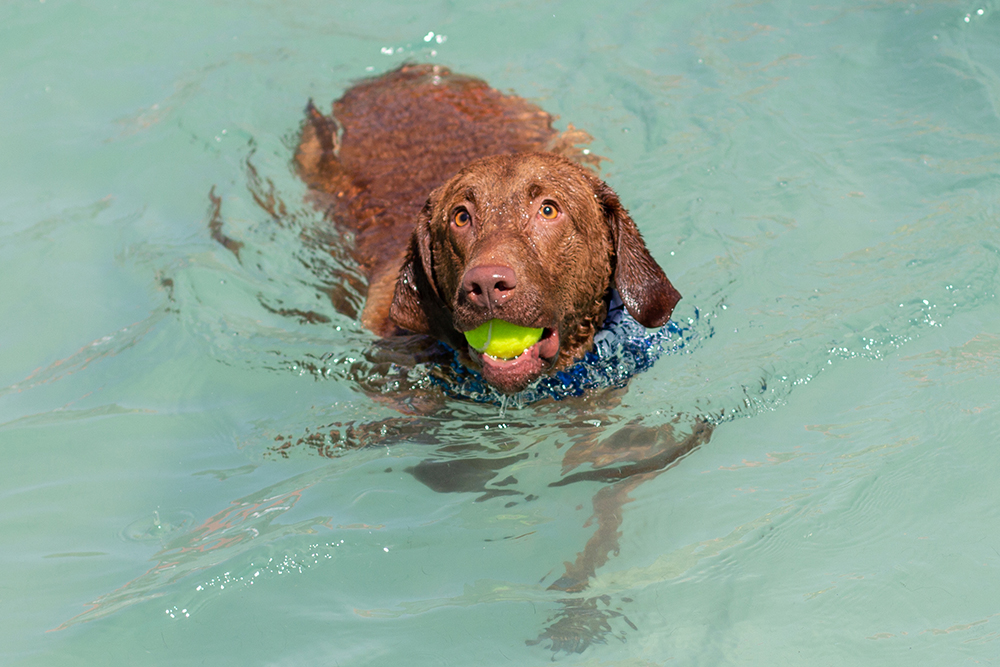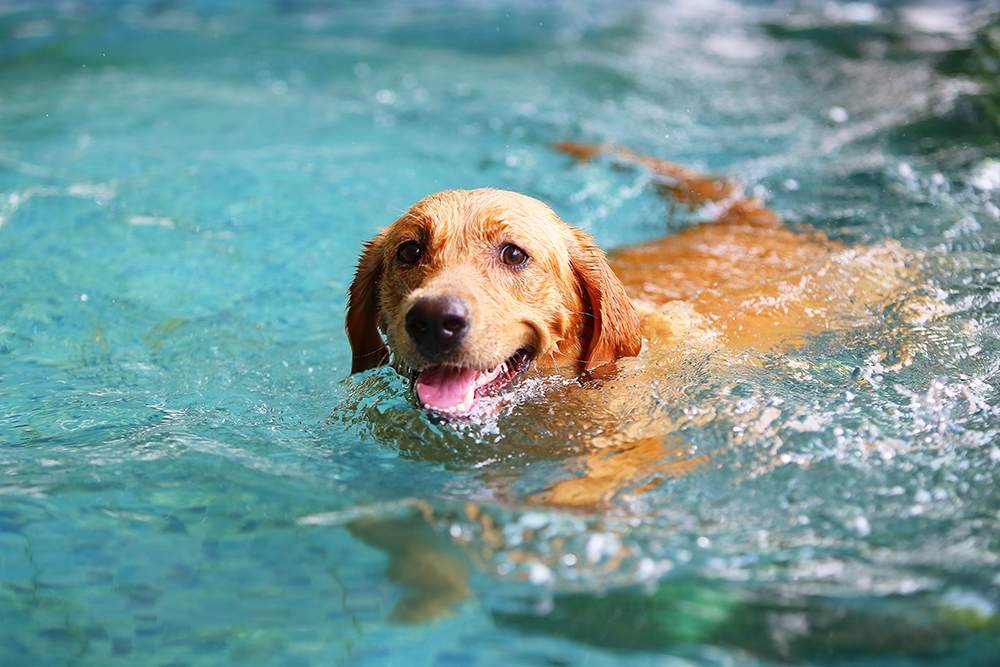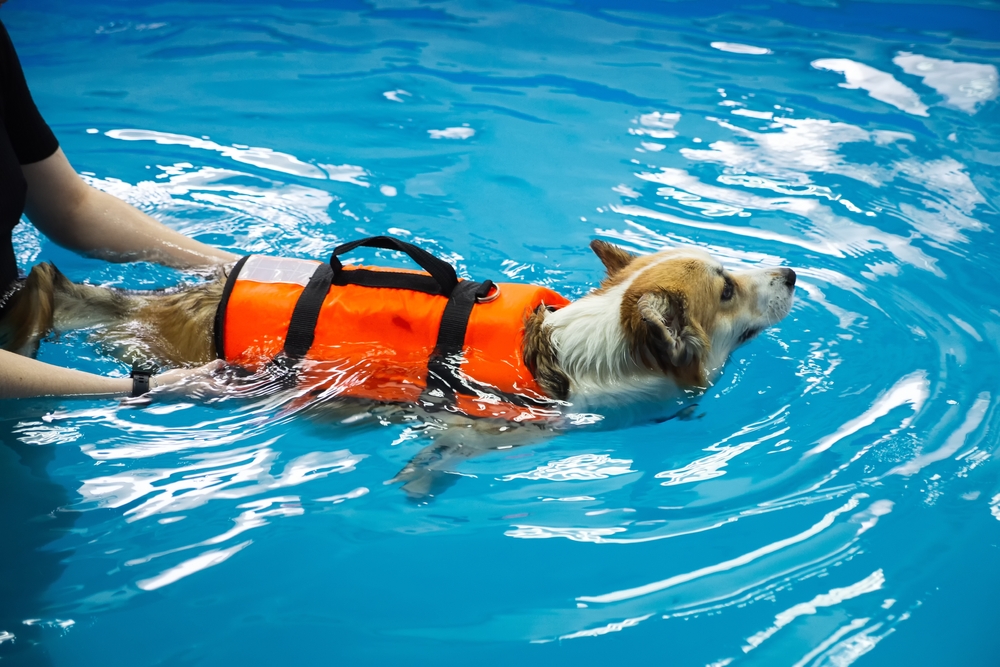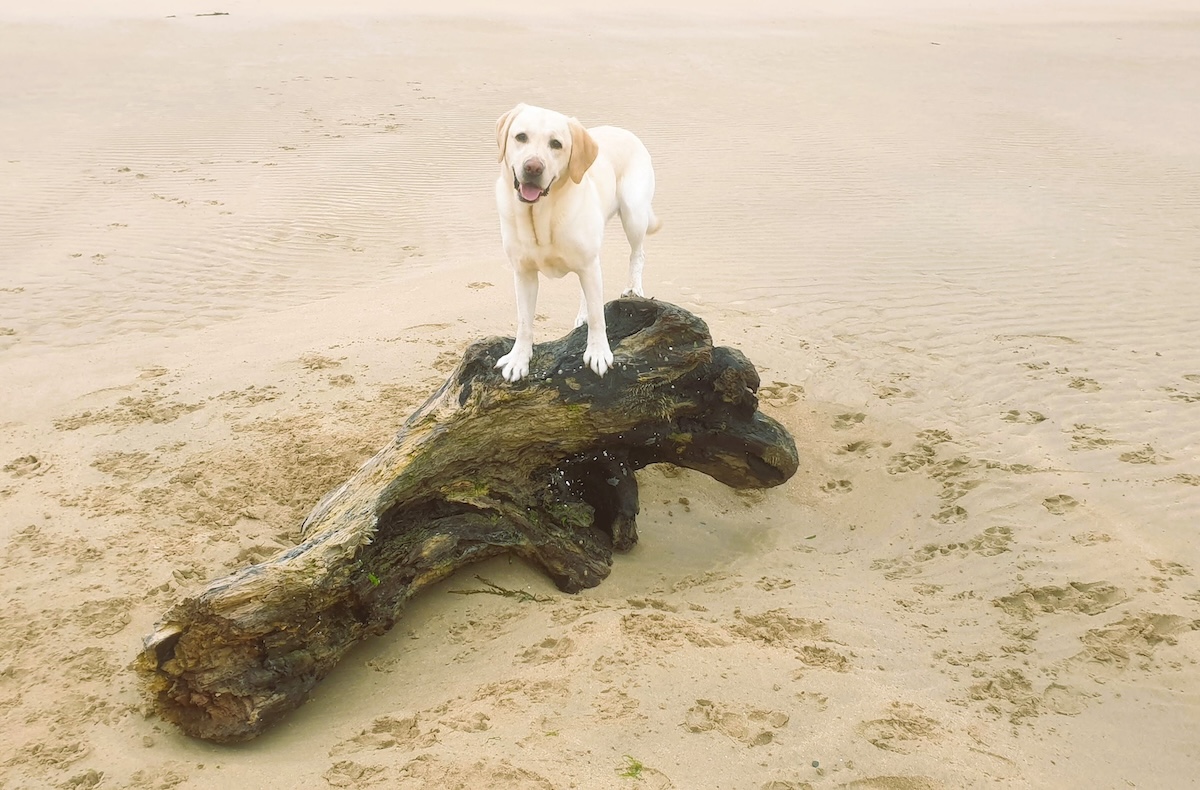Click to Skip Ahead
We all have specific images that come to mind when we think about what dogs do, like peeing on fire hydrants, digging holes in the garden, chewing shoes, and plowing into water! But have you ever wondered if all dogs naturally know how to swim or if they need to be taught?
Some breeds have strong swimming instincts, while others need extra help. Also, certain breeds shouldn’t swim at all!
Here, we fill you in on what breeds take to the water like ducks, which ones will need to stay away, and how to keep your best friend safe around water.
Do Dogs Know How to Swim?
Some dogs are practically born to swim, though it typically depends on why the breed was developed in the first place.
Breeds That Swim Easily
The following breeds were bred to work around water, and you’ll notice multiple retrievers and hunting dogs:

- American Water Spaniel: This rare breed has “water” as part of their name, which tells you everything!
- Chesapeake Bay Retriever: These hunting dogs were bred quite specifically for the cold water of Chesapeake Bay.
- Curly-Coated Retriever: These British dogs are known to retrieve from the coldest water!
- Irish Water Spaniel: This dog has the word “water” in their name and a water-repellent coat.
- Labrador Retriever: No list of dogs that love the water is complete without the famous Lab!
- Newfoundland: Given the size and heaviness of their coat, you wouldn’t think that the Newfie would do great in water, but they were bred as water rescue dogs.
- Nova Scotia Duck Tolling Retriever: This is one of the smaller retrievers known for their ability to lure ducks while running along the shoreline.
- Portuguese Water Dog: This breed was used to “herd” fish into fishermen’s nets.
- Spanish Water Dog: This breed can effectively work at herding and hunting on both land and water.
- Standard Poodle: The Poodle’s name in German translates to “pudel” or “pudelin,” which roughly means to “splash in the water.”
This is not an exhaustive list, as many more dog breeds excel at swimming, but those are a few examples to give you an idea.
Dogs That Need Assistance to Swim
Most dogs, even if they’re excellent swimmers, may require assistance when they reach their senior years or if they develop a physical disability. This is also true for small breeds like Chihuahuas and Yorkies, which tend to be good swimmers but may still need help while in the water. When these small dogs are exposed to large bodies of water, they can easily become overwhelmed, tire quickly, or even panic.
Breeds That Should Not Go Swimming
Certain breeds are not capable of sustained swimming due to their body structures. Dogs with short legs, long bodies, large chests, and short muzzles are among these breeds. They may be able to swim short distances or poke their nose above water if they accidentally fall into a pool or similar body of water, but they will struggle to keep it up for long and are at risk of drowning.
Breeds that fall under this category include:
Dogs with flat faces can easily have water go up their noses, making it easier for them to drown. Breeds with huge chests or long bodies will struggle to stay afloat.
Other breeds, like Huskies, were not bred to work around the wet stuff, so they tend to stay away from water. Their dense double coats can also take a long time to dry after they get completely soaked, it’s important to dry them off as much as possible if they do go swimming.

Investing in a Dog Life Jacket
When introducing your dog to water, you must ensure that the experience is enjoyable and not frightening. Any mishap during this process could traumatize your dog and make them avoid water for life.
One of the best ways to introduce your dog to water is by getting a life jacket specifically designed for dogs. This will help them float and build their confidence in the water. If you have a breed that can’t or shouldn’t swim, you should still have them wear a life jacket whenever they’re going to be near water, just in case of accidents. Life jackets come in various sizes and shapes to accommodate different breeds.
Even if your dog is a good swimmer, it is always best and safest to use a life jacket. Dogs can overexert themselves while swimming, and the life jacket will enable them to stay afloat without getting too tired.
Before purchasing a life jacket, ensure that it fits your dog correctly. Check the measurements carefully, and make sure there is a sturdy handle on the back. This will make it easier to pull your dog to safety if needed.
5 Tips on Teaching Your Dog to Swim
After you get a life jacket for your dog, you can start teaching them to swim (if they’re a breed that can adequately learn).
1. Pick Shallow Water
To ensure the safety of your dog, choose the right location for introducing them to water. Check the water quality and safety for risks like blue green algae, and hidden objects under the water that may cause injury. Also avoid areas with strong currents or rough waters, such as the ocean and rivers, instead opt for pools, lakes or ponds.
When teaching your dog how to swim, start in shallow water, and allow them to explore at their own pace. This way, your dog can learn to swim comfortably and confidently.
Image Credit: Yekatseryna Netuk, Shutterstock
2. Get Into the Water Yourself
Once your dog has had ample time to explore the shallows, you can try to encourage them to enter into deeper water. This might not occur on the first day, of course. If your dog appears nervous, give them time to venture in deeper, even if it takes several trips to the water.
You can also walk your dog into the water yourself. They should be on a leash, and you may also want to hold onto the handle of the life jacket. Put your hands under their stomach to give them extra support as they start to paddle.
3. Increase the Depth
The natural progression here is gradually getting deeper. Be sure to continue to support your dog when their feet leave the ground, and if they seem anxious, get them back to the shallows.
Remember, not all dogs learn to swim at the same pace, so watch your pup closely and never push them too quickly. It’s crucial to respect their comfort level and adjust your training accordingly.
4. Use Enticements
Make being in the water an enjoyable experience for your dog by playing with a ball or any other toy that they love. Ensure that the toy is waterproof, and throw it around in the shallow end. Gradually move yourself into slightly deeper water, and continue playing. This will make the water look fun for your dog and encourage them to join you.
Conclusion
If you notice that your dog is exhibiting signs of anxiety around water, it’s essential to take things slowly. Never force your dog into the water, and always take things at their own pace.
Quite a few breeds have trouble swimming, and it can be dangerous for them to be in deep water. If you decide to take your dog swimming on hot days, make sure to have plenty of drinking water and shaded areas available for them. It’s crucial to supervise your dog around the water at all times to ensure their safety.
Remember, not all dogs enjoy swimming, and that’s okay. You can still have fun around water even if your dog only wants to get their paws wet.
Featured Image Credit: Wasitt Hemwarapornchai, Shutterstock












